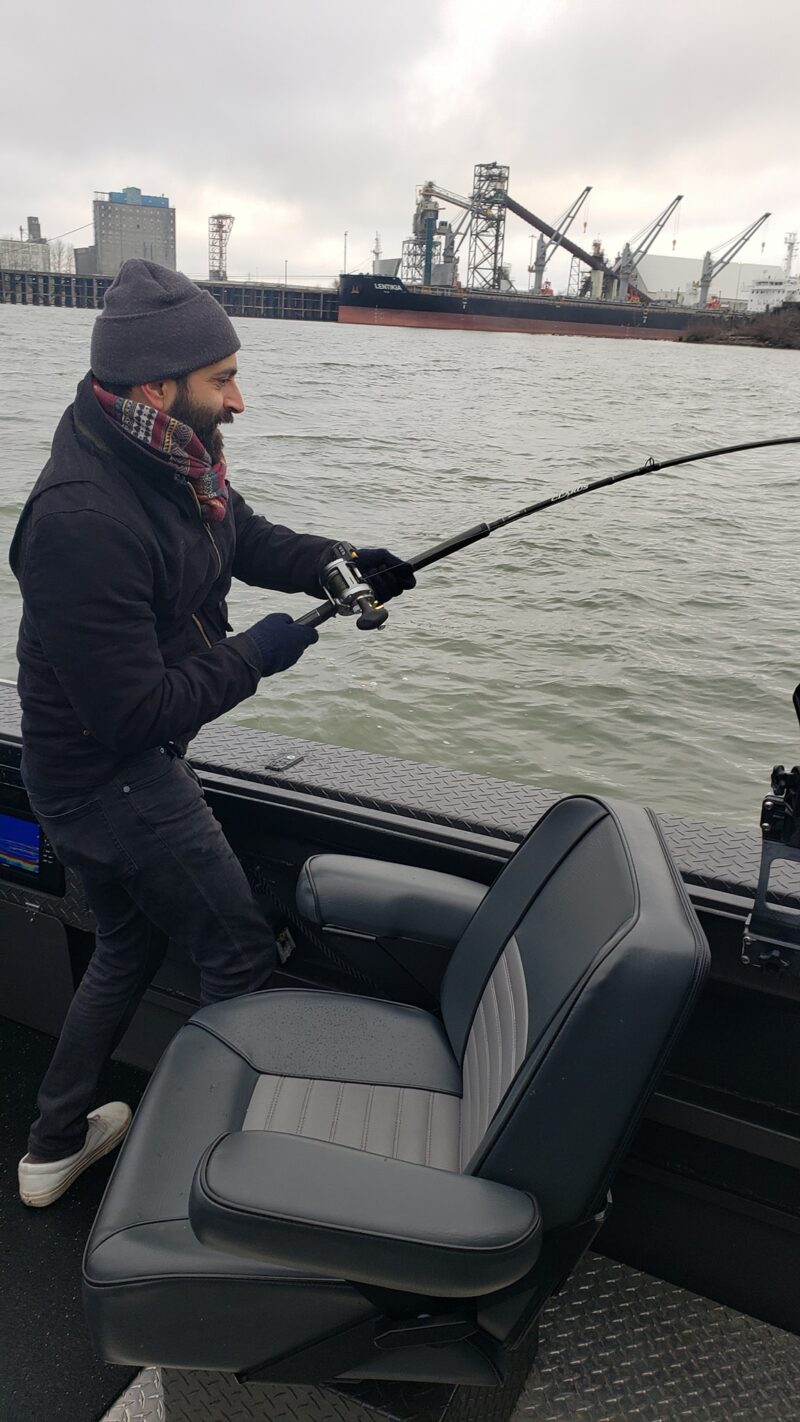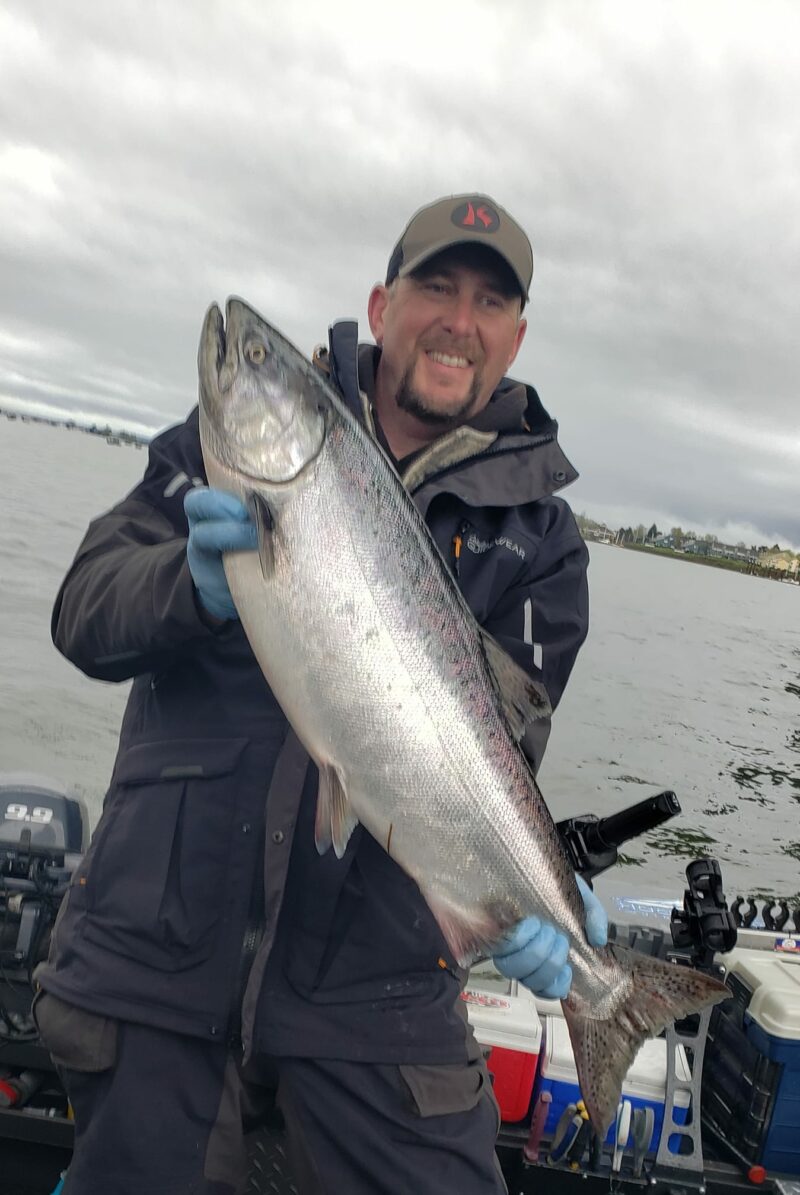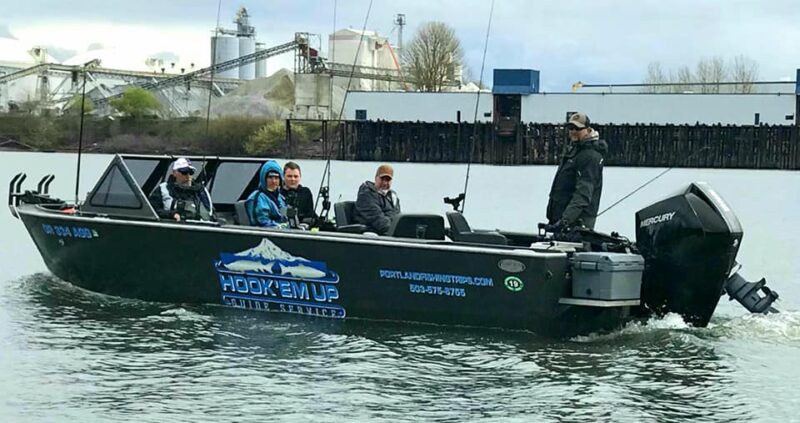Gearing Up for Fall: How to Dress for a Columbia River Fishing Trip
If you’re planning your first Columbia River fishing trip this fall, one of the most common questions you might have is simple but important: what to wear for fall fishing in Oregon? The Pacific Northwest is famous for its unpredictable weather, especially from September through November. A crisp, sunny morning can turn into a chilly, wet afternoon in the blink of an eye. The good news is that if you dress smart, you’ll stay dry, warm, and comfortable, no matter what the Columbia throws at you.
After decades of guiding clients on these waters, I can tell you with certainty that proper clothing isn’t just about comfort. It can make the difference between enjoying a full day on the river or cutting your trip short because you’re cold, soaked, or miserable. Let’s walk through exactly how to prepare.

The Golden Rule: Layering is Your Best Friend
The key to dressing for fall fishing in Oregon is following the three-layer system. Think of it as building your own portable climate control. Each layer serves a purpose, and together they protect you from moisture, trap heat, and block wind and rain.
- The base layer keeps sweat away from your skin.
- The mid-layer provides warmth.
- The outer shell shields you from wind and water.
This system is flexible, meaning you can shed or add layers as the weather changes. That flexibility is essential here in the Pacific Northwest, where you may face all four seasons in one day.
Base Layer: Stay Dry First
Start with a base layer that wicks moisture away from your body. When you’re active on the boat or casting from shore, even in cool weather, you’ll sweat. If that sweat lingers on your skin, it’ll chill you fast once the wind picks up.
The best materials for this layer are merino wool or high-quality synthetics like polyester. Merino wool has the advantage of being soft, insulating even when damp, and naturally odor-resistant. Synthetics dry quickly and are usually more budget-friendly.
The one fabric to avoid at all costs is cotton. Cotton holds onto water like a sponge and will sap your body heat once it’s wet. A cotton T-shirt under your jacket may feel fine at the dock, but hours later it can leave you shivering.
Mid-Layer: Build Your Warmth
On top of your base layer comes insulation. This mid-layer is what keeps you warm when temperatures dip, especially during early mornings or windy afternoons on the Columbia.
Two excellent choices are fleece jackets or vests and puffy jackets filled with down or synthetic insulation. Fleece is breathable, easy to layer, and quick-drying. A synthetic or down puffy, on the other hand, offers superior warmth for its weight and packs down small when not in use.
For most fall trips, I recommend packing both. Start with a fleece during mild conditions, then add a puffy if the weather turns cold. The goal is to be warm enough without feeling bulky or restricted when casting or reeling.
Your Weatherproof Outer Armor
The most critical layer for fall fishing gear is your outer shell. This is your shield against Pacific Northwest rain, wind, and spray. If there’s one place to invest in quality, it’s here.
Look for a 100 percent waterproof and windproof rain jacket with a sturdy hood and sealed seams. Breathable fabric helps keep you from overheating when you’re active, but durability is just as important. The Columbia River is no place for a flimsy windbreaker.
Equally important are waterproof bib pants. Standard rain pants often leave gaps at the waist or ride up when you bend, letting water sneak in. Bibs offer chest-high protection, keep your core dry, and layer easily over your base and mid-layers. Together, the jacket and bibs form a fortress that keeps you dry from head to toe.

Don’t Forget the Extremities
It’s easy to focus on jackets and pants, but the smaller items are just as vital. Cold hands, wet feet, or a bare head can ruin an otherwise perfect day of fishing. Here’s what I always remind clients to bring:
- Waterproof boots with good traction for wet decks or riverbanks.
- Non-cotton socks, ideally merino wool, to keep feet warm and dry.
- A warm hat or beanie, preferably wind-resistant, since you lose a lot of heat through your head.
- Waterproof gloves with grip, so you can handle gear and fish without freezing your fingers.
- Polarized sunglasses, which cut glare on the water, protect your eyes, and help you spot fish below the surface.
A neck gaiter, hand warmers, and an extra pair of dry socks can also be lifesavers when conditions get rough.
Dressing for Oregon Weather: Expect the Unexpected
The Columbia River corridor has a mind of its own. One moment you’re basking in sunshine, the next you’re bracing against a sharp squall. Dressing for Oregon weather in fall means being ready for the unexpected.
That’s why the layering system works so well. You can peel off your puffy jacket if the sun comes out, then pull it back on when the afternoon wind picks up. You can leave the dock with dry skies, but if rain moves in, your outer shell keeps you fishing instead of scrambling for cover.
Remember, staying dry is the top priority. Once you’re wet, it’s nearly impossible to get warm again on the water. By preparing correctly, you won’t just endure the weather. You’ll forget about it and focus on what matters: enjoying the river and chasing fish.
Final Thoughts and Next Steps

If you’ve been wondering what to wear for fall fishing in Oregon, the answer is clear. Stick to the three-layer system, choose the right fabrics, invest in a solid outer shell, and don’t overlook your boots, socks, gloves, and hat. This combination will keep you warm, dry, and comfortable throughout your Columbia River fishing trip.
Gear up with confidence, and remember that you’re never on your own. At HOOK’EM UP Guide Service, we’re always happy to answer specific gear questions and help you fine-tune your setup. Book your fall adventure with us, knowing you’ll be ready for whatever the Columbia River brings.
